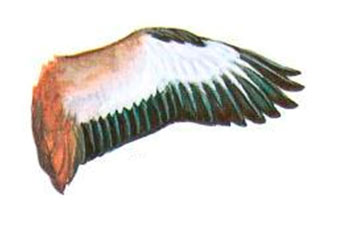Wildlife - Species

Photograph by Lisa Smith
Species Specific Regulations
Black-bellied Whistling-Duck
Licenses: Hunting License required. Migratory Bird Hunting and Conservation Stamp (Federal Duck Stamp) that is validated by the hunter signing the stamp in ink across the face of the stamp
Limits: Please see Migratory Bird Regulations for any game zones restrictions or Limitations.
Black-bellied Whistling-Duck (Dendrocygna autumnalis)

Description
Black-bellied whistling-ducks are a flashy chestnut bird with a bright orange-red bill, pink legs, and white wing spot. Both sexes look alike. Whistling-ducks are not actually puddle ducks, but tree ducks.
Average Size
Whistling-ducks have an average length of 18-19 inches and an average weight of 1 3/4 pounds.
Range
Black-bellied whistling-ducks are currently undergoing a range expansion. Their range consists of large portions of South America and along the coast of Central America. Today, in the United States, Black-bellied whistling-ducks are mostly found along the Gulf Coast, the southern portion of the Mississippi River, and the Florida Panhandle. In South Carolina they are found primarily along the coast, mostly in the southern portion of the state. They have been reported as far inland as Aiken county and as far north as Georgetown county.
Preferred Habitat
These whistling-ducks can be found in shallow freshwater ponds or lakes, often those containing water hyacinth, water lilies, and cattails.
Wings

Food Habits
Black-bellied whistling-ducks eat mainly plant material, including smartweed, grasses, sedges, bindweed, and nightshade. They will also consume agricultural crops of sorghum, rice, corn, millet, and wheat. Aquatic animals, such as snails, insects, and spiders are also consumed in small amounts.
Reproduction
Whistling-ducks are cavity nesters, but they do not excavate the cavity. Both the male and female select the cavity. These ducks will also nest in nest boxes, and have been known to nest on the ground occasionally. The hen lays 9-18 creamy white eggs.
Sound
Shrill whistling calls.
Behavior
- Formerly known as tree-ducks, this species actively nests and perches in trees.
- Appear to exhibit no territoriality.
- Highly social and can be found in large flocks in areas where they are common.
Citations, Publications and Literature
U.S. Fish & Wildlife Service, Federal Duck Stamp Office Presents: North American Waterfowl (Adobe PDF file)
James, J. Dale and Jonathan E. Thompson. 2001. Black-bellied Whistling-Duck (Dendrocygna autumnalis), The Birds of North America Online (A. Poole, Ed.). Ithaca: Cornell Lab of Ornithology; Retrieved from the Birds of North America Online